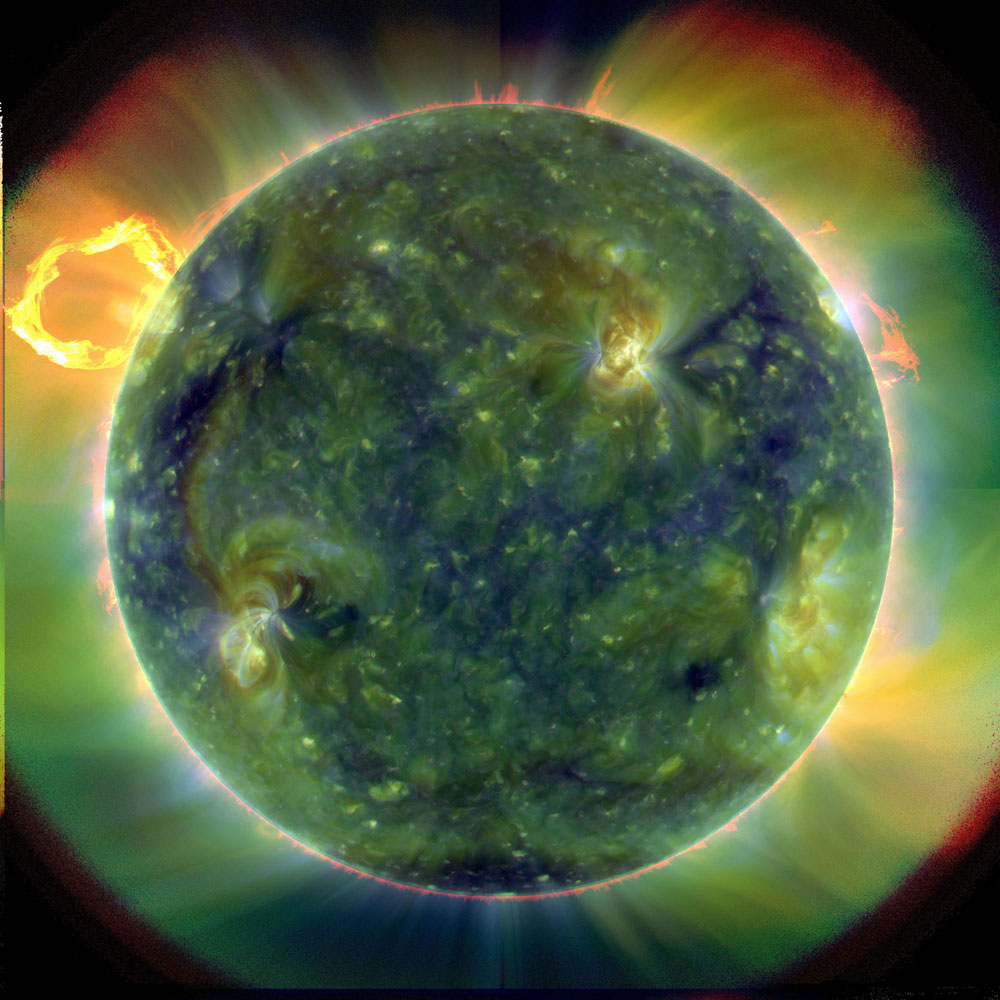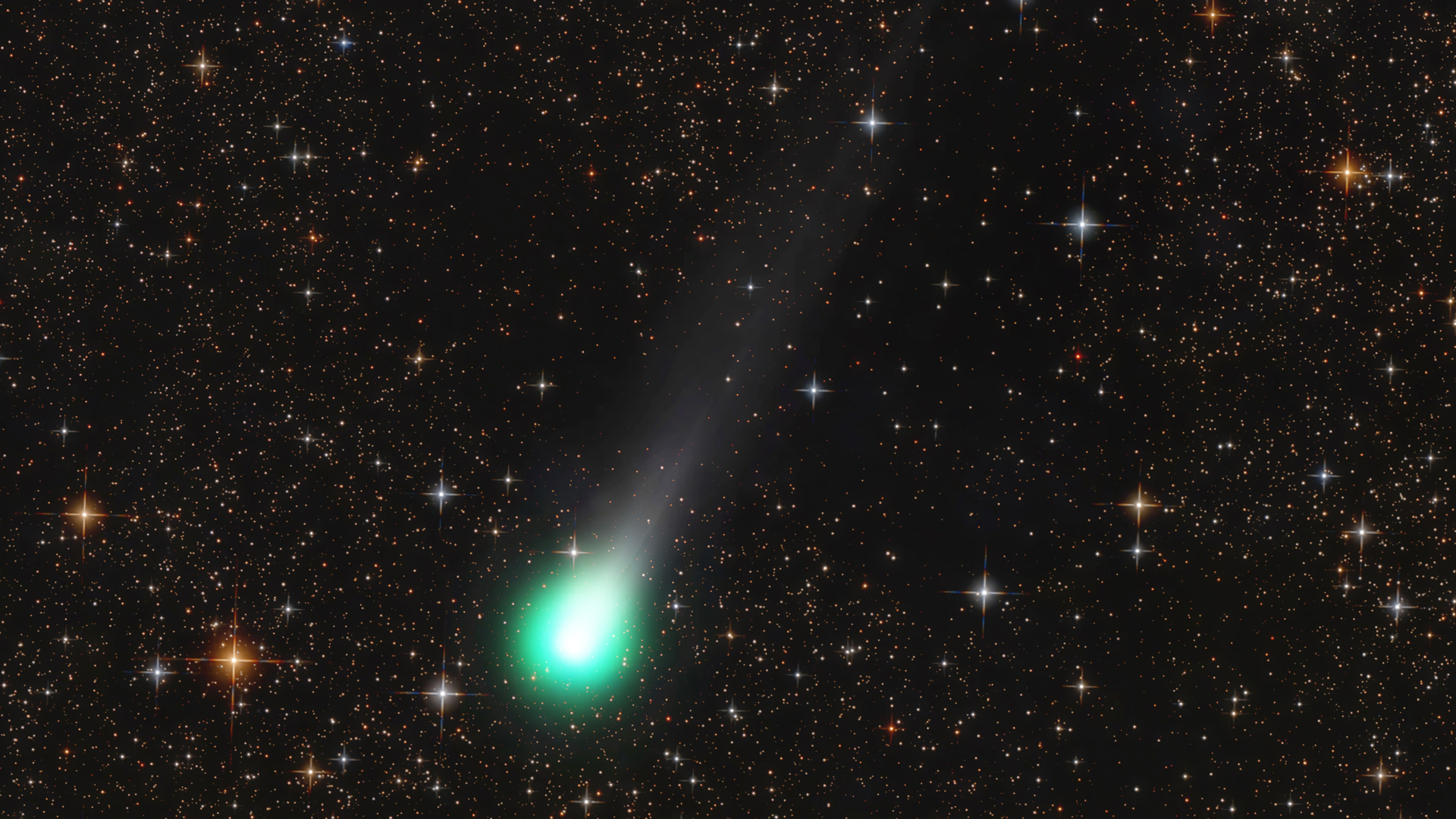'Spectacular' First Images from New Solar Observatory Released

The first images of the sun beamed home from NASA's newestsolar observatory have wowed mission scientists with their extraordinary detailand unexpected findings.
NASA released the firstnew images today from the Solar Dynamics Observatory, a probe launched onFeb. 11 to peer deep into the layers of the sun, monitor solar storms andinvestigate the mysteries of the sun's inner workings.
"The spacecraft and the instruments are working verywell," said Richard Fisher, director of the Heliophysics Division at NASAHeadquarters in Washington, D.C. "What we've seen is truly, in my view,spectacular."
The SolarDynamics Observatory (SDO) carries three instruments that constantly stareat the sun, generating images that have a resolution 10 times better than an HDtelevision.
"I believe this is going to be a revolutionaryview" of the sun, Fisher told SPACE.com, who likened the new observatory'simpact to that of the HubbleSpace Telescope.
SDO will be revolutionary to the study of the sun "inthe same way Hubble was revolutionary for astrophysics," he said.
The young solar observatory will also be generating anastounding amount of data.
Breaking space news, the latest updates on rocket launches, skywatching events and more!
?It will stream the equivalent of half-a-million songs perday down to a ground station from its geosynchronous orbit. That's about 150million bits of data per second, 24 hours a day and seven days a week ? almost50 times more science data than any other mission in NASA's history.
The simultaneous monitoring of several wavelengths of thesun's light coupled with the more rapid pace of observations will givescientists an unprecedentedly detailed view of the features present on thesun. It will also help monitor the solar flares and storms that can impactEarth, as well as shed light on the influence of the sun's magnetic fieldon the processes that take place within the sun.
"The nice thing about SDO is that we have all of thesun all of the time," said Philip H. Scherrer the principal investigator forSDO's Helioseismic and Magnetic Imager instrument at Stanford University inPalo Alto, Calif.Already observations of solar features and their evolution isshowing that "the magnetic field is really much more dominant than wethought," Fisher said.
It's also very dynamic: "That magnetic fieldi s neverthe same twice, it is always changing," said Dean Pesnell, SDO projectscientist at Goddard Space Flight Center in Greenbelt, Md.
And though the spacecraft is still in its commissioningphase ? meaning all of the instruments are being properly calibrated and theprobe is entering its final orbit ? it has taken images that are already makingunexpected revelations.
One particularly interesting observation, Fisher said, showsthe evolution of an active region of the sun, also known as a sunspot. The darkspots on the sun's surface are connected to intense magnetic activity. SDOcaught this sunspot in decline that didn't look quite how scientists expectedit to.
"It's a little bit baffling about what happened,"Fisher said.
SDO observed that tiny changes in the magnetic field due tothe decline of the sunspot "have a huge impact on the upper solaratmosphere," Fisher said, likening that to a situation on Earth where alightning bolt in Indiana would cause a hurricane on the East Coast.
The sunspot is associated with a blast of solar material outinto space known as a coronal mass ejection or CME. SDO was able to see thesunspot associated with this CME as well as the waves rippling across the sun'ssurface associated with it and the flare that caused it.
The CME ejected as much material as is contained in theentire Mississippi River at a speed of about a million miles per hour; thematerial was accelerated up to that speed in just one second, said Alan Title,the principal investigator of SDO's Atmospheric Imaging Assembly instrument atLockheed Martin Solar and Astrophysics Laboratory in Palo Alto, Calif.
That SDO is already stumping scientists with its findingseven though it's not yet in full observing mode (which will happen sometimenext month) shows what a useful spacecraft it is, Fisher said.
"The hallmark of a successful science experiment [is]that you don't understand what you've gotten back," he said.
Such solar events aren't just interesting to scientists ?they can have a major impact on the Earth by knocking out communicationsystems, GPS satellites and even electrical grids. Scientists hope that SDOwill allow them to make better predictions on when solar flares and CMEs mighterupt in Earth's direction.
"The more we know about these flares the better we'llbe able to be proactive instead of reactive" to space weather, said TomWoods the principal investigator of the Extreme Ultraviolet VariabilityExperiment instrument at the University of Colorado in Boulder.
And by allowing scientists to better understand the sun, SDOwill also shed light on the workings of other stars.
- Images:Hyperactive Sun
- TheSun in a New Light
- NewSunspots Herald a More Active Sun
- Video ? NASA's Solar Dynamics Observatory

Andrea Thompson is an associate editor at Scientific American, where she covers sustainability, energy and the environment. Prior to that, she was a senior writer covering climate science at Climate Central and a reporter and editor at Live Science, where she primarily covered Earth science and the environment. She holds a graduate degree in science health and environmental reporting from New York University, as well as a bachelor of science and and masters of science in atmospheric chemistry from the Georgia Institute of Technology.
